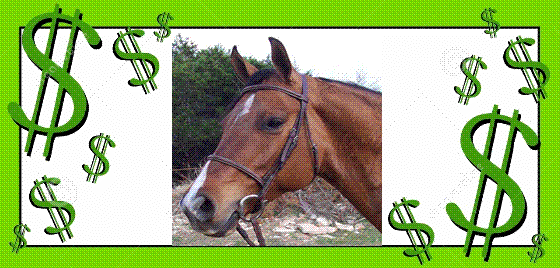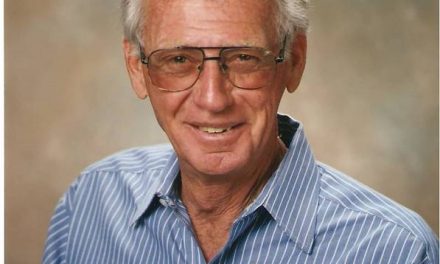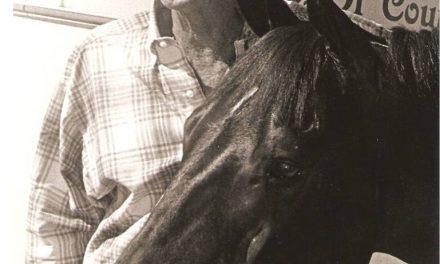A Horse, Of Course
 It’s hard to save a buck these days.
It’s hard to save a buck these days.
It can be done, but to do it, you have to spend money.
Don’t buy cheap horses or cheap tack. Both always turn out to be more expensive in the long run.
Over the years, the initial price of the horse will be the least expensive equine related item. So spend your money wisely, and get a good one.
You can be reasonably certain that a “free” or “cheap” horse has health problems, is not able to be handled or has issues. A good bred, well-trained mature horse will be well worth the money spent.
When contemplating the purchase of a horse, spend some money and get a vet-check. The veterinarian will examine the horse for soundness and general good health. He may advise you to get radiographs if you intend to use the horse in performance events.
Once you get the horse, you will want to feed it properly. This means providing plenty of good quality forage, and possibly a commercial grain if the forage does not meet nutritional needs.
If you are keeping the horse at a boarding stable, do research to determine if the feed being provided is designed for your horse’s age, health and activity level. Check to ensure the amount being fed to your horse is the amount he needs. A stable that feeds “two flakes of hay in the morning and two flakes at night” to every horse in the barn may not have your horse’s individual nutritional needs met. Be prepared to spend additional money if your horse needs a different grain, extra forage or another meal.
Water is the least expensive nutrient, but the most important.
Not providing your horse with fresh, clean water at all times can lead to colic, dehydration and the inability to utilize nutrients in the feed. Lack of water can cost you money in veterinarian bills, so invest in water containers that are easily cleaned and re-filled on a daily basis.
If using automatic water cups, install a flow meter so daily consumption can be monitored. Also, don’t neglect checking automatic water cups every day, to ensure they are working and clean.
Large water tanks should be dumped and cleaned weekly. If the water is green with algae, do not expect your horse to drink from it – would you?
You’ll save money on tack if you buy the best the first time around and take care of it. One good lead shank at $12.00 will be better than three broken ones at $4.00 each.
Good leather products, which are well-cared for, can last a lifetime. Cheap reins, headstalls and saddles fall apart and can cause the horse discomfort. The same is true of bits and saddle pads.
And unless you are experienced at buying tack, avoid auction bargains. The savings at auctions are frequently imaginary.
Keep your investments picked up, cleaned up and in their proper place. Items that are lost, dirty or broken are always expensive.
Economy with horses is principally good management. Buy the best you can afford and take care of it. Buy cheap and you may find yourself holding a broken lead and the horse gone.
Visit www.horsecoursesonline.com to earn certification as a horse trainer, riding instructor or stable manager, or work toward a Bachelor of Science degree in Equine Studies. All courses online.




